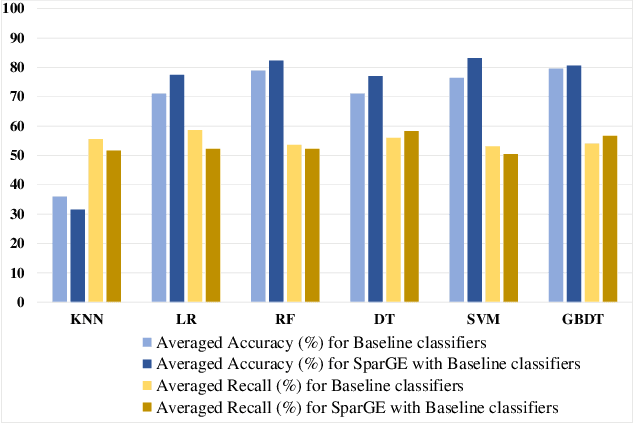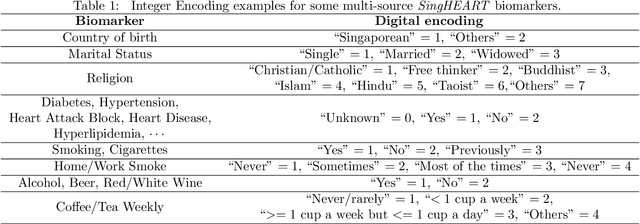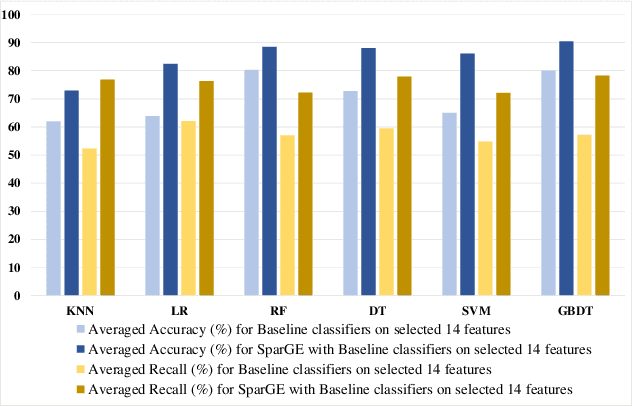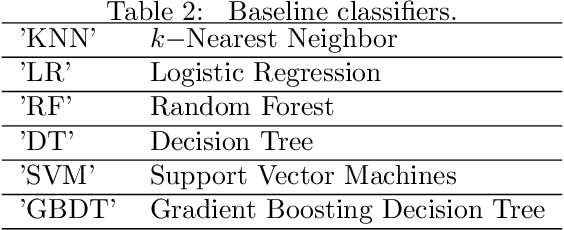Tongtong Zhang
PreMixer: MLP-Based Pre-training Enhanced MLP-Mixers for Large-scale Traffic Forecasting
Dec 18, 2024



Abstract:In urban computing, precise and swift forecasting of multivariate time series data from traffic networks is crucial. This data incorporates additional spatial contexts such as sensor placements and road network layouts, and exhibits complex temporal patterns that amplify challenges for predictive learning in traffic management, smart mobility demand, and urban planning. Consequently, there is an increasing need to forecast traffic flow across broader geographic regions and for higher temporal coverage. However, current research encounters limitations because of the inherent inefficiency of model and their unsuitability for large-scale traffic network applications due to model complexity. This paper proposes a novel framework, named PreMixer, designed to bridge this gap. It features a predictive model and a pre-training mechanism, both based on the principles of Multi-Layer Perceptrons (MLP). The PreMixer comprehensively consider temporal dependencies of traffic patterns in different time windows and processes the spatial dynamics as well. Additionally, we integrate spatio-temporal positional encoding to manage spatiotemporal heterogeneity without relying on predefined graphs. Furthermore, our innovative pre-training model uses a simple patch-wise MLP to conduct masked time series modeling, learning from long-term historical data segmented into patches to generate enriched contextual representations. This approach enhances the downstream forecasting model without incurring significant time consumption or computational resource demands owing to improved learning efficiency and data handling flexibility. Our framework achieves comparable state-of-the-art performance while maintaining high computational efficiency, as verified by extensive experiments on large-scale traffic datasets.
A Nerf-Based Color Consistency Method for Remote Sensing Images
Nov 08, 2024Abstract:Due to different seasons, illumination, and atmospheric conditions, the photometric of the acquired image varies greatly, which leads to obvious stitching seams at the edges of the mosaic image. Traditional methods can be divided into two categories, one is absolute radiation correction and the other is relative radiation normalization. We propose a NeRF-based method of color consistency correction for multi-view images, which weaves image features together using implicit expressions, and then re-illuminates feature space to generate a fusion image with a new perspective. We chose Superview-1 satellite images and UAV images with large range and time difference for the experiment. Experimental results show that the synthesize image generated by our method has excellent visual effect and smooth color transition at the edges.
Efficient Stochastic Differential Equation for DEM Super Resolution with Void Filling
Jul 02, 2024Abstract:Digital Elevation Model (DEM) plays a fundamental role in remote sensing and photogrammetry. Enhancing the quality of DEM is crucial for various applications. Although multiple types of defects may appear simultaneously in the same DEM, they are commonly addressed separately. Most existing approaches only aim to fill the DEM voids, or apply super-resolution to the intact DEM. This paper introduces a unified generative model that simultaneously addresses voids and low-resolution problems, rather than taking two separate measures. The proposed approach presents the DEM Stochastic Differential Equation (DEM-SDE) for unified DEM quality enhancement. The DEM degradation of downsampling and random voids adding is modeled as the SDE forwarding, and the restoration is achieved by simulating the corresponding revert process. Conditioned on the terrain feature, and adopting efficient submodules with lightweight channel attention, DEM-SDE simultaneously enhances the DEM quality with an efficient process for training. The experiments show that DEM-SDE method achieves highly competitive performance in simultaneous super-resolution and void filling compared to the state-of-the-art work. DEM-SDE also manifests robustness for larger DEM patches.
psPRF:Pansharpening Planar Neural Radiance Field for Generalized 3D Reconstruction Satellite Imagery
Jun 22, 2024Abstract:Most current NeRF variants for satellites are designed for one specific scene and fall short of generalization to new geometry. Additionally, the RGB images require pan-sharpening as an independent preprocessing step. This paper introduces psPRF, a Planar Neural Radiance Field designed for paired low-resolution RGB (LR-RGB) and high-resolution panchromatic (HR-PAN) images from satellite sensors with Rational Polynomial Cameras (RPC). To capture the cross-modal prior from both of the LR-RGB and HR-PAN images, for the Unet-shaped architecture, we adapt the encoder with explicit spectral-to-spatial convolution (SSConv) to enhance the multimodal representation ability. To support the generalization ability of psRPF across scenes, we adopt projection loss to ensure strong geometry self-supervision. The proposed method is evaluated with the multi-scene WorldView-3 LR-RGB and HR-PAN pairs, and achieves state-of-the-art performance.
Deep Extrinsic Manifold Representation for Vision Tasks
Mar 31, 2024



Abstract:Non-Euclidean data is frequently encountered across different fields, yet there is limited literature that addresses the fundamental challenge of training neural networks with manifold representations as outputs. We introduce the trick named Deep Extrinsic Manifold Representation (DEMR) for visual tasks in this context. DEMR incorporates extrinsic manifold embedding into deep neural networks, which helps generate manifold representations. The DEMR approach does not directly optimize the complex geodesic loss. Instead, it focuses on optimizing the computation graph within the embedded Euclidean space, allowing for adaptability to various architectural requirements. We provide empirical evidence supporting the proposed concept on two types of manifolds, $SE(3)$ and its associated quotient manifolds. This evidence offers theoretical assurances regarding feasibility, asymptotic properties, and generalization capability. The experimental results show that DEMR effectively adapts to point cloud alignment, producing outputs in $ SE(3) $, as well as in illumination subspace learning with outputs on the Grassmann manifold.
rpcPRF: Generalizable MPI Neural Radiance Field for Satellite Camera
Oct 11, 2023Abstract:Novel view synthesis of satellite images holds a wide range of practical applications. While recent advances in the Neural Radiance Field have predominantly targeted pin-hole cameras, and models for satellite cameras often demand sufficient input views. This paper presents rpcPRF, a Multiplane Images (MPI) based Planar neural Radiance Field for Rational Polynomial Camera (RPC). Unlike coordinate-based neural radiance fields in need of sufficient views of one scene, our model is applicable to single or few inputs and performs well on images from unseen scenes. To enable generalization across scenes, we propose to use reprojection supervision to induce the predicted MPI to learn the correct geometry between the 3D coordinates and the images. Moreover, we remove the stringent requirement of dense depth supervision from deep multiview-stereo-based methods by introducing rendering techniques of radiance fields. rpcPRF combines the superiority of implicit representations and the advantages of the RPC model, to capture the continuous altitude space while learning the 3D structure. Given an RGB image and its corresponding RPC, the end-to-end model learns to synthesize the novel view with a new RPC and reconstruct the altitude of the scene. When multiple views are provided as inputs, rpcPRF exerts extra supervision provided by the extra views. On the TLC dataset from ZY-3, and the SatMVS3D dataset with urban scenes from WV-3, rpcPRF outperforms state-of-the-art nerf-based methods by a significant margin in terms of image fidelity, reconstruction accuracy, and efficiency, for both single-view and multiview task.
Fast Satellite Tensorial Radiance Field for Multi-date Satellite Imagery of Large Size
Sep 21, 2023



Abstract:Existing NeRF models for satellite images suffer from slow speeds, mandatory solar information as input, and limitations in handling large satellite images. In response, we present SatensoRF, which significantly accelerates the entire process while employing fewer parameters for satellite imagery of large size. Besides, we observed that the prevalent assumption of Lambertian surfaces in neural radiance fields falls short for vegetative and aquatic elements. In contrast to the traditional hierarchical MLP-based scene representation, we have chosen a multiscale tensor decomposition approach for color, volume density, and auxiliary variables to model the lightfield with specular color. Additionally, to rectify inconsistencies in multi-date imagery, we incorporate total variation loss to restore the density tensor field and treat the problem as a denosing task.To validate our approach, we conducted assessments of SatensoRF using subsets from the spacenet multi-view dataset, which includes both multi-date and single-date multi-view RGB images. Our results clearly demonstrate that SatensoRF surpasses the state-of-the-art Sat-NeRF series in terms of novel view synthesis performance. Significantly, SatensoRF requires fewer parameters for training, resulting in faster training and inference speeds and reduced computational demands.
SparGE: Sparse Coding-based Patient Similarity Learning via Low-rank Constraints and Graph Embedding
Feb 03, 2022



Abstract:Patient similarity assessment (PSA) is pivotal to evidence-based and personalized medicine, enabled by analyzing the increasingly available electronic health records (EHRs). However, machine learning approaches for PSA has to deal with inherent data deficiencies of EHRs, namely missing values, noise, and small sample sizes. In this work, an end-to-end discriminative learning framework, called SparGE, is proposed to address these data challenges of EHR for PSA. SparGE measures similarity by jointly sparse coding and graph embedding. First, we use low-rank constrained sparse coding to identify and calculate weight for similar patients, while denoising against missing values. Then, graph embedding on sparse representations is adopted to measure the similarity between patient pairs via preserving local relationships defined by distances. Finally, a global cost function is constructed to optimize related parameters. Experimental results on two private and public real-world healthcare datasets, namely SingHEART and MIMIC-III, show that the proposed SparGE significantly outperforms other machine learning patient similarity methods.
 Add to Chrome
Add to Chrome Add to Firefox
Add to Firefox Add to Edge
Add to Edge